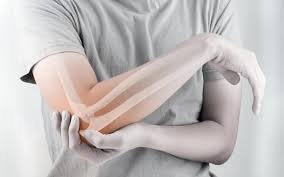Introduction
Neuropathic pain is a complex and often misunderstood condition that affects millions of individuals worldwide. In this comprehensive guide, we delve deep into the intricacies of neuropathic pain, exploring its causes, symptoms, diagnosis, and treatment options.
What is Neuropathic Pain?
Neuropathic pain, also known as nerve pain, is a chronic condition characterized by abnormal sensations, often described as burning, stabbing, or shooting pains. Unlike nociceptive pain, which arises from tissue damage, neuropathic pain occurs due to dysfunction or damage to the nervous system.
Causes of Neuropathic Pain
Neuropathic pain can stem from various underlying conditions, including:
1. Diabetes Mellitus
Diabetic neuropathy is one of the most common causes of neuropathic pain. Prolonged high blood sugar levels can damage nerves throughout the body, leading to debilitating pain.
2. Traumatic Injury
Injuries to the nerves, such as those sustained in accidents or surgeries, can result in neuropathic pain. The damage disrupts the normal signaling of the nervous system, causing persistent discomfort.
3. Infections
Certain viral or bacterial infections, such as shingles or HIV, can damage nerves and trigger neuropathic pain. The inflammatory response to these infections can exacerbate symptoms.
4. Autoimmune Disorders
Autoimmune diseases like multiple sclerosis or lupus can cause the immune system to attack the body’s own tissues, including nerves, resulting in neuropathic pain.
Symptoms of Neuropathic Pain
Neuropathic pain manifests differently in each individual, but common symptoms include:
- Burning Sensation: Many patients report a burning or tingling sensation, often accompanied by numbness.
- Electric Shock-like Pains: Some describe sharp, shooting pains that feel like electric shocks.
- Increased Sensitivity: Hyperalgesia and allodynia, where normal touch or mild pressure causes pain, are common symptoms.
- Muscle Weakness: Weakness or paralysis of affected muscles may occur in severe cases.
Diagnosis of Neuropathic Pain
Diagnosing neuropathic pain requires a comprehensive evaluation by a healthcare professional. Key diagnostic methods include:
1. Medical History
A detailed history of symptoms, past medical conditions, and any recent injuries is crucial in identifying potential causes of neuropathic pain.
2. Physical Examination
A thorough physical examination helps assess sensory function, muscle strength, and reflexes, aiding in the localization of nerve damage.
3. Diagnostic Tests
Various tests, such as nerve conduction studies, electromyography (EMG), and imaging scans like MRI or CT scans, may be conducted to pinpoint the source of neuropathic pain.
Treatment Options for Neuropathic Pain
Managing neuropathic pain often requires a multidisciplinary approach tailored to the individual’s specific needs. Treatment modalities may include:
1. Medications
- Antidepressants: Tricyclic antidepressants and selective serotonin-norepinephrine reuptake inhibitors (SNRIs) can help alleviate neuropathic pain by modulating neurotransmitter levels.
- Anticonvulsants: Drugs like gabapentin and pregabalin are commonly prescribed to stabilize nerve activity and reduce pain signals.
- Topical Agents: Capsaicin cream or lidocaine patches can provide localized pain relief.
2. Physical Therapy
Exercise programs, stretching techniques, and manual therapies can improve mobility, strengthen muscles, and alleviate neuropathic pain symptoms.
3. Nerve Blocks
Injecting anesthetic or steroid medications directly into the affected nerves can temporarily block pain signals and provide relief.
4. Neuromodulation
Techniques such as spinal cord stimulation or peripheral nerve stimulation deliver electrical pulses to targeted nerves, disrupting pain signals and providing long-term pain relief.
Conclusion
Neuropathic pain can significantly impact quality of life, but with proper diagnosis and management, individuals can find relief and regain functionality. By understanding the underlying causes and exploring the array of treatment options available, patients can embark on a journey towards a pain-free existence.





